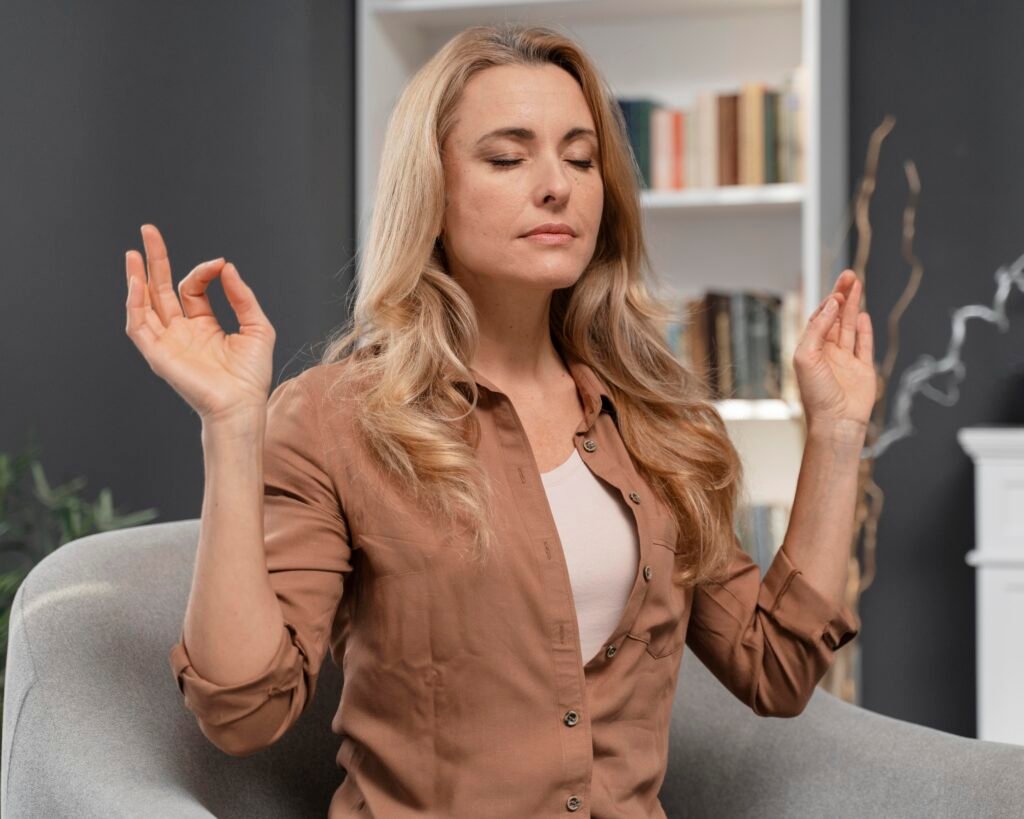12 Ways to Calm Anxiety Down
Anxiety affects millions of people around the world. It can upset daily life and lower happiness. But, there is hope. This guide offers 12 effective ways to calm your anxiety and improve your emotional health.

You’ll learn about breathing exercises and lifestyle changes to help you relax. These tools can bring peace to your mind and body. They help you live a happier life. Explore these methods to face life’s challenges with more confidence.
Understanding Anxiety: A Complex Emotion
Anxiety is a complex emotion that affects our daily lives deeply. It’s a natural response to fears or stressful situations. But when it doesn’t go away and affects how we function, it might be an anxiety disorder.
What is Anxiety?
Anxiety is a mix of thoughts, feelings, and physical sensations. It’s a common feeling that can be mild or very intense. The definition of anxiety covers many types of anxiety disorders, each with its own signs.
Common Symptoms of Anxiety
People with signs and symptoms of anxiety may feel or show:
-
- Feelings of fear, dread, or apprehension
-
- Rapid heartbeat and breathing
-
- Muscle tension and restlessness
-
- Difficulty concentrating or making decisions
-
- Irritability and mood swings
-
- Insomnia or changes in sleep patterns
These symptoms can be mild or severe and can really affect someone’s life. Knowing about anxiety, its types, and signs helps us understand and deal with it.
Breathing Exercises: A Powerful Tool
Anxiety can feel overwhelming, but you have a powerful tool: your breath. Breathing exercises can change the game for managing anxiety and promoting calm.
Deep breathing techniques and calm breathing exercises can activate your parasympathetic nervous system. This system is key for the body’s “rest and digest” response. It helps you feel more grounded and in control, even when anxiety is high.
Here are some effective breathwork for anxiety techniques to try:
-
- The 4-7-8 Breathing Technique: Inhale for 4 seconds, hold for 7 seconds, and exhale for 8 seconds. Repeat this cycle several times to promote relaxation.
- Diaphragmatic Breathing: Also known as “belly breathing,” this involves taking slow, deep breaths that expand your abdomen, rather than your chest.
- Box Breathing: Inhale for 4 seconds, hold for 4 seconds, exhale for 4 seconds, and hold for 4 seconds. Repeat this pattern to create a sense of calm.
Consistency is key with breathing exercises for anxiety. Make these techniques part of your daily routine. You’ll notice a big difference in how well you handle stress and anxiety.
Using your breath, you can take charge of your anxiety and find inner peace. Try these calm breathing exercises and see the change for yourself.
How to Calm Anxiety Down
Anxiety can really get in the way of living your life. But, there are many ways to take back control and feel better. We’ll look at 12 strategies that can help calm your anxiety fast, lessen its effects, and manage it better.
Mindfulness Meditation
Mindfulness meditation is a great way to handle anxiety. It involves focusing on now and your breath. This helps quiet your mind and lessen anxious thoughts. With regular practice, you can feel more calm and strong inside.
Progressive Muscle Relaxation
Progressive muscle relaxation is easy yet effective for reducing anxiety. It means tensing and then relaxing different muscle groups. This can make you feel both physically and mentally relaxed. It’s great for easing anxiety symptoms like tight muscles and a fast heartbeat.
-
- Deep Breathing Exercises
- Cognitive Behavioral Therapy (CBT)
- Journaling
- Aromatherapy
- Guided Imagery
- Acupressure
Using these methods to manage anxiety, you can build a strong toolkit. This helps you how to calm anxiety quickly and improve your emotional health. Remember, everyone’s experience with anxiety is different. Be patient and try different things to see what works best for you.
The Power of Physical Activity
Physical activity can change how you handle anxiety. It releases endorphins, eases muscle tension, and boosts your overall health. These benefits help make you feel calmer.
Exercise and Anxiety Relief
Adding physical activities to your day can really help with anxiety. It doesn’t matter if it’s a fast walk, a yoga class, or a high-energy workout. Moving your body can ease anxiety symptoms.
Exercise can make you feel happier, less stressed, and more in control of your feelings.
Gentle Yoga for Anxiety Management
Gentle yoga is great for those with anxiety. It mixes controlled breathing, mindful movements, and deep relaxation. This helps calm your nervous system and brings peace.
Trying out gentle yoga poses like child’s pose or forward folds can be very helpful. They’re part of what you can do to fight anxiety.
FAQ
What is the definition of anxiety?
Anxiety is a feeling of worry, fear, and hesitation that can make daily life hard. It’s a normal response to stress or danger.
What are the common symptoms of anxiety?
Symptoms include racing thoughts, tight muscles, fast breathing, and a quick heartbeat. You might also sweat, feel restless, or uneasy.
How can breathing exercises help calm anxiety?
Deep, controlled breathing can turn on the “rest and digest” response in your body. This can lessen anxiety symptoms and make you feel calmer.
What is the role of mindfulness meditation in managing anxiety?
Mindfulness meditation means focusing on now and accepting thoughts and feelings without judging them. It helps you notice your thoughts and deal with anxiety better.
How can physical activity help reduce anxiety?
Regular exercise and yoga can release endorphins, ease muscle tension, and boost your mood. This can make you feel calmer and lessen anxiety.
